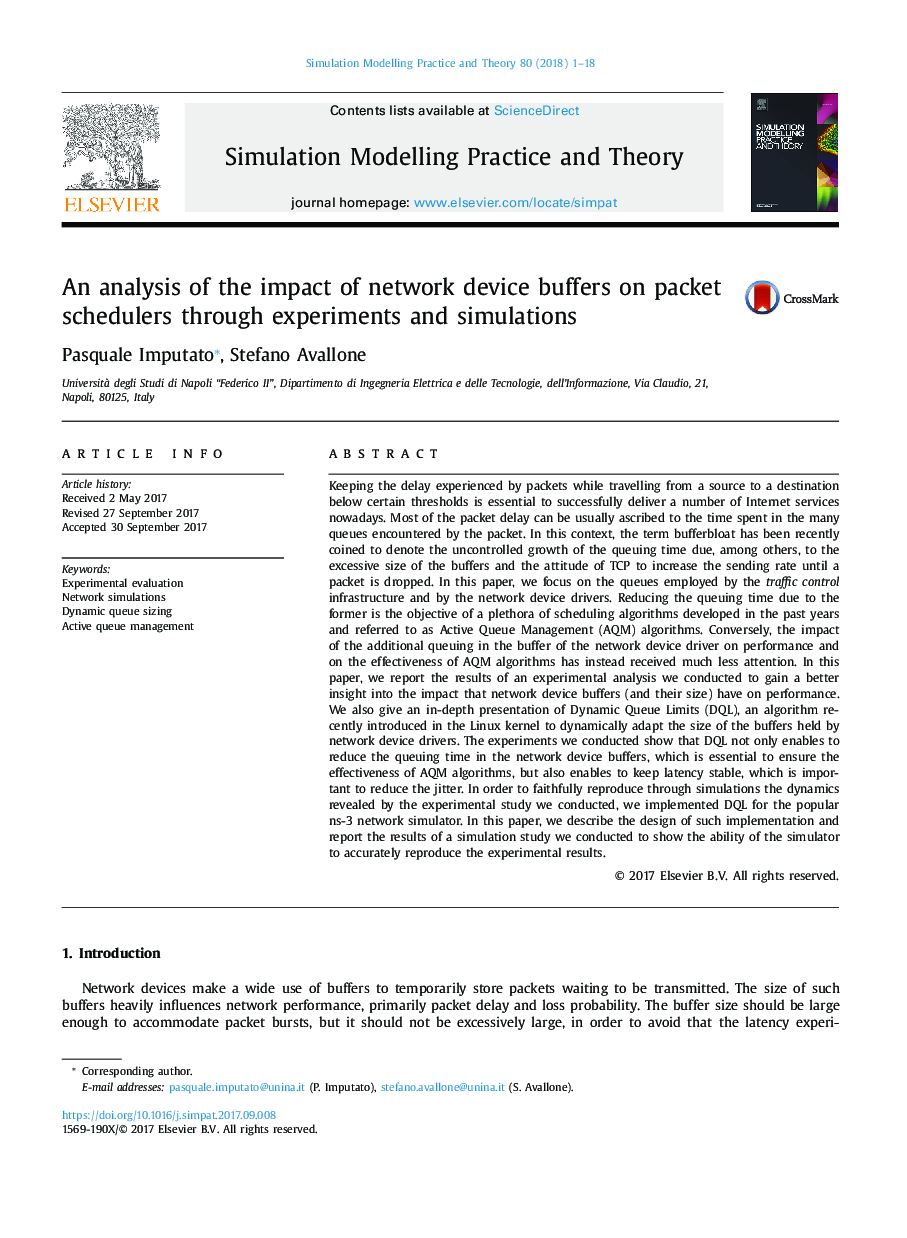| کد مقاله | کد نشریه | سال انتشار | مقاله انگلیسی | نسخه تمام متن |
|---|---|---|---|---|
| 4962604 | 1446647 | 2018 | 18 صفحه PDF | دانلود رایگان |
Keeping the delay experienced by packets while travelling from a source to a destination below certain thresholds is essential to successfully deliver a number of Internet services nowadays. Most of the packet delay can be usually ascribed to the time spent in the many queues encountered by the packet. In this context, the term bufferbloat has been recently coined to denote the uncontrolled growth of the queuing time due, among others, to the excessive size of the buffers and the attitude of TCP to increase the sending rate until a packet is dropped. In this paper, we focus on the queues employed by the traffic control infrastructure and by the network device drivers. Reducing the queuing time due to the former is the objective of a plethora of scheduling algorithms developed in the past years and referred to as Active Queue Management (AQM) algorithms. Conversely, the impact of the additional queuing in the buffer of the network device driver on performance and on the effectiveness of AQM algorithms has instead received much less attention. In this paper, we report the results of an experimental analysis we conducted to gain a better insight into the impact that network device buffers (and their size) have on performance. We also give an in-depth presentation of Dynamic Queue Limits (DQL), an algorithm recently introduced in the Linux kernel to dynamically adapt the size of the buffers held by network device drivers. The experiments we conducted show that DQL not only enables to reduce the queuing time in the network device buffers, which is essential to ensure the effectiveness of AQM algorithms, but also enables to keep latency stable, which is important to reduce the jitter. In order to faithfully reproduce through simulations the dynamics revealed by the experimental study we conducted, we implemented DQL for the popular ns-3 network simulator. In this paper, we describe the design of such implementation and report the results of a simulation study we conducted to show the ability of the simulator to accurately reproduce the experimental results.
Journal: Simulation Modelling Practice and Theory - Volume 80, January 2018, Pages 1-18
